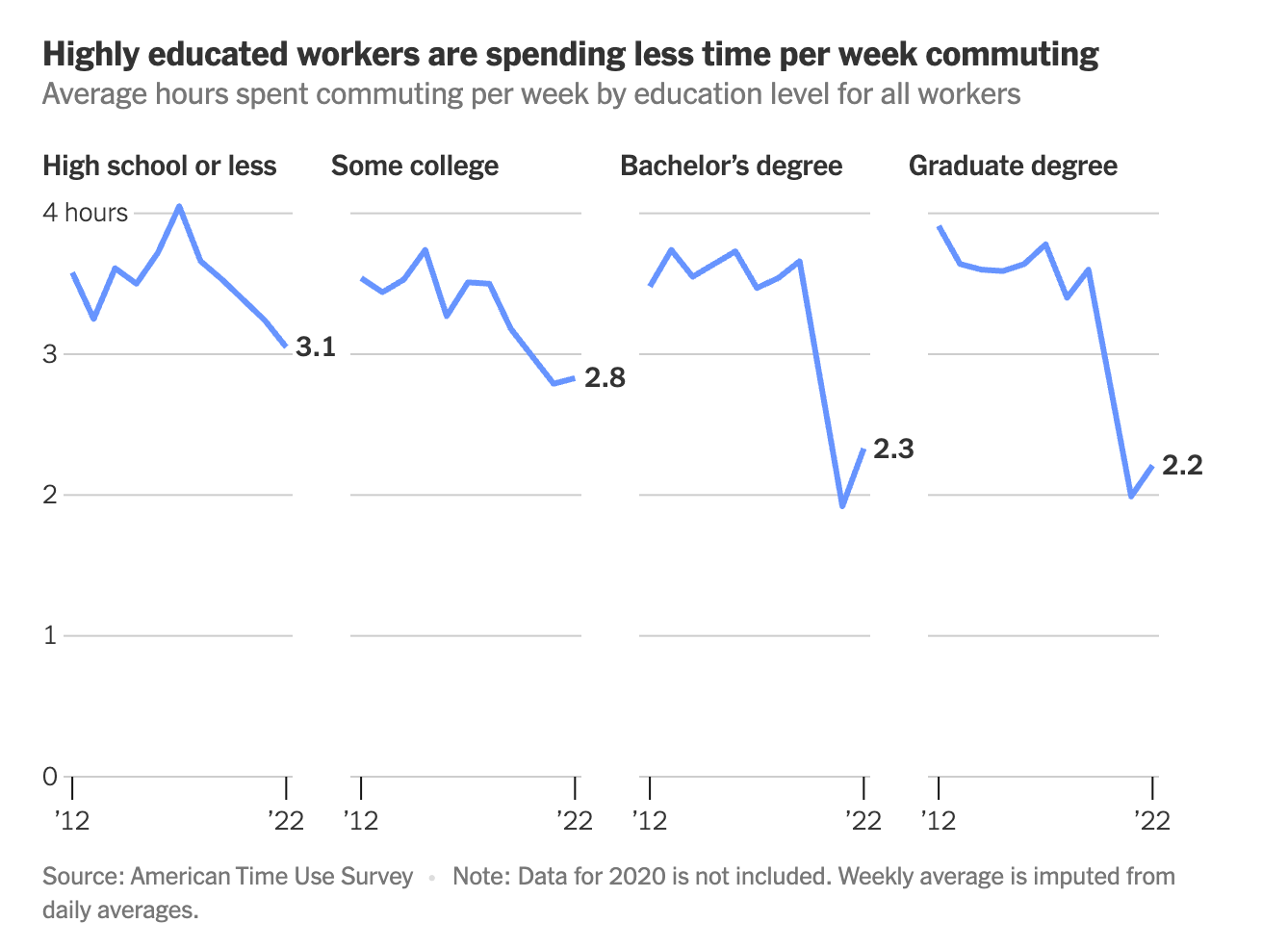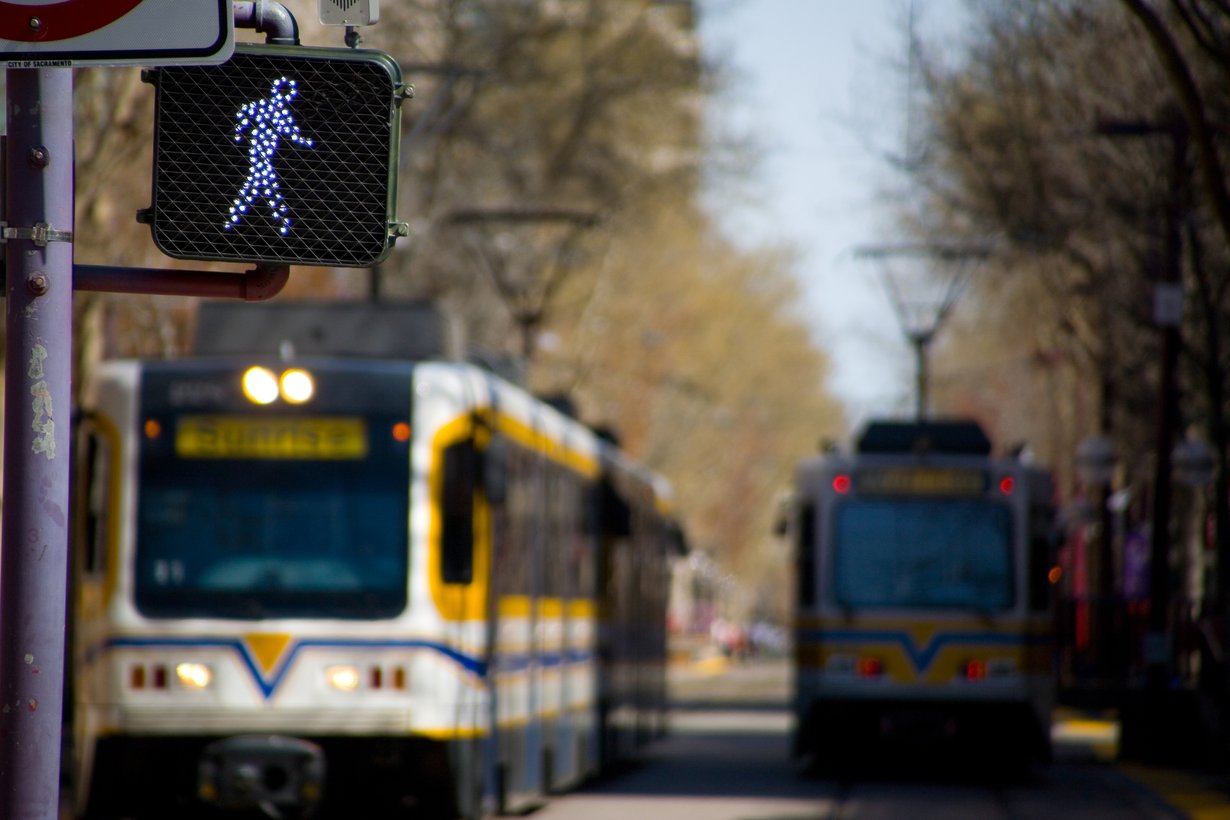The global pandemic worsened many inequalities, spanning healthcare and education gaps, and economic divides, just to name a few. Mobility was particularly affected as white collar commuters stayed home or drove their own vehicles, and essential workers relied on reduced public transit service or private rideshare services.
The New York Times recently reported that overall commuting time is still down from pre-pandemic levels — a good thing, given the association between low commute times and better socioeconomic mobility. However, the reduction in overall commute times is primarily driven by highly-educated workers, while individuals with lower education levels continue to face a formidable journey to their workplaces.
 Image credit: New York Times
Image credit: New York Times
The decrease in travel by white-collar professionals has altered commutes for everyone else in ways both positive and negative: flattening traffic patterns to make traditional rush-hours more manageable, but reducing the frequency of fixed-line transit due to decreased overall ridership.
In response to the escalating mobility inequality, many cities are adopting a new form of transportation to ensure everyone has a reliable and efficient way to travel. Post-2020, places like St. Louis, Missouri, Birmingham, Alabama, Wilson, North Carolina, have all introduced microtransit — on-demand transit service in shared vehicles — to their underserved communities. Unlike conventional transit programs which run on a fixed route and schedule, microtransit combines the flexibility of personal driving with the affordability of public transit.
According to a 2023 Via rider survey among 50 US cities, microtransit is playing a significant role in getting riders to work. Sixty percent of riders are using microtransit to reach work or school. Noticeablely, this transportation mode delivers a convenient riding experience to those who need public transit the most. Seventy percent of riders lack access to a private vehicle, and 80% of them have an annual household income lower than $50k. “Without microtransit, I would be stranded,” said one car-free rider in Arlington, Texas, in the survey.
Christopher Wiese, an assistant professor at the Georgia Institute of Technology who studies commuting, suggests that the quality of a commute is more about how "peaceful and predictable" it is, rather than the duration of it. Microtransit prioritizes exactly that by adapting to the unique requirements of each passenger, creating a personalized and reliable experience for all.
Interested in learning more about using microtransit to enable easier access to employment for your communities and boost local economic growth? We’d love to talk!

Data Journalist




